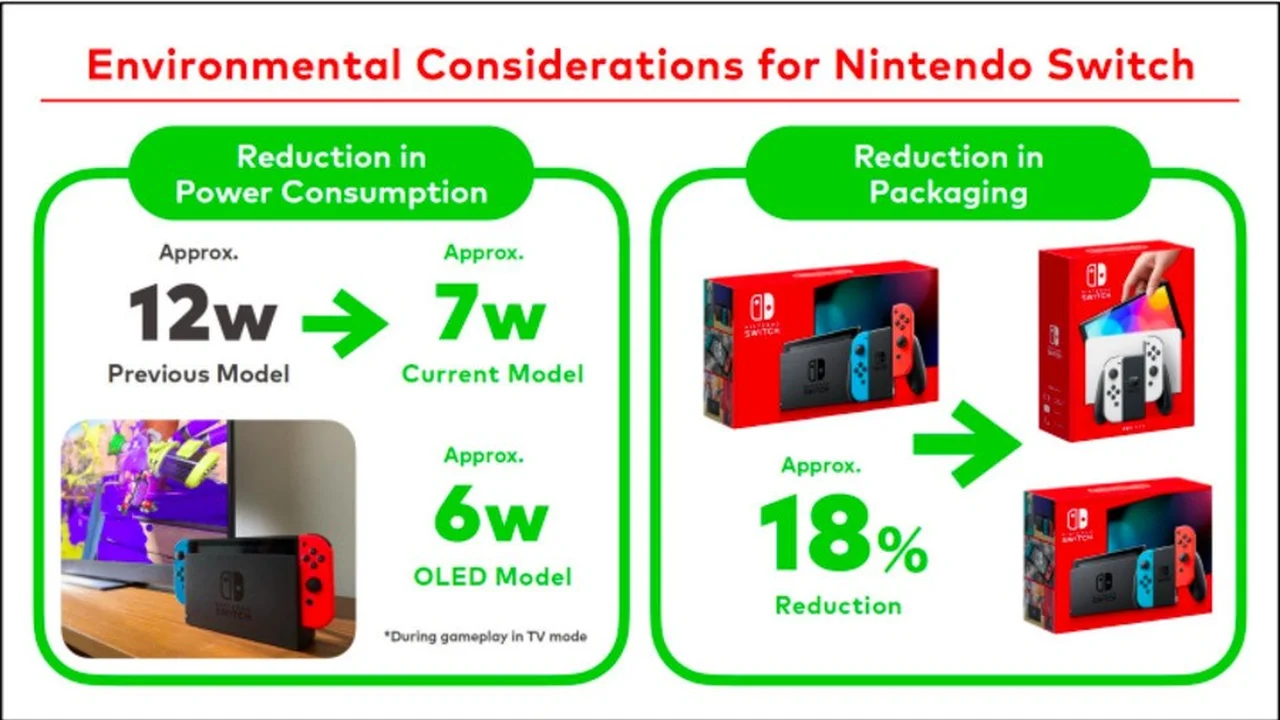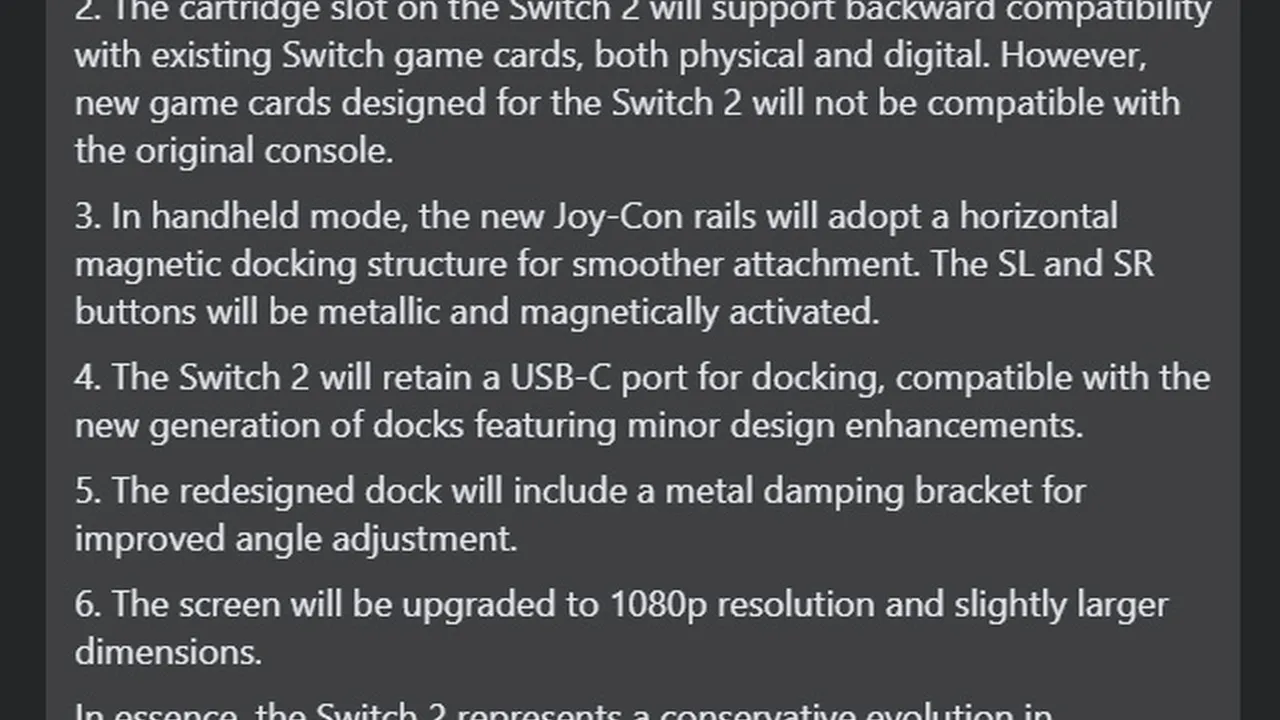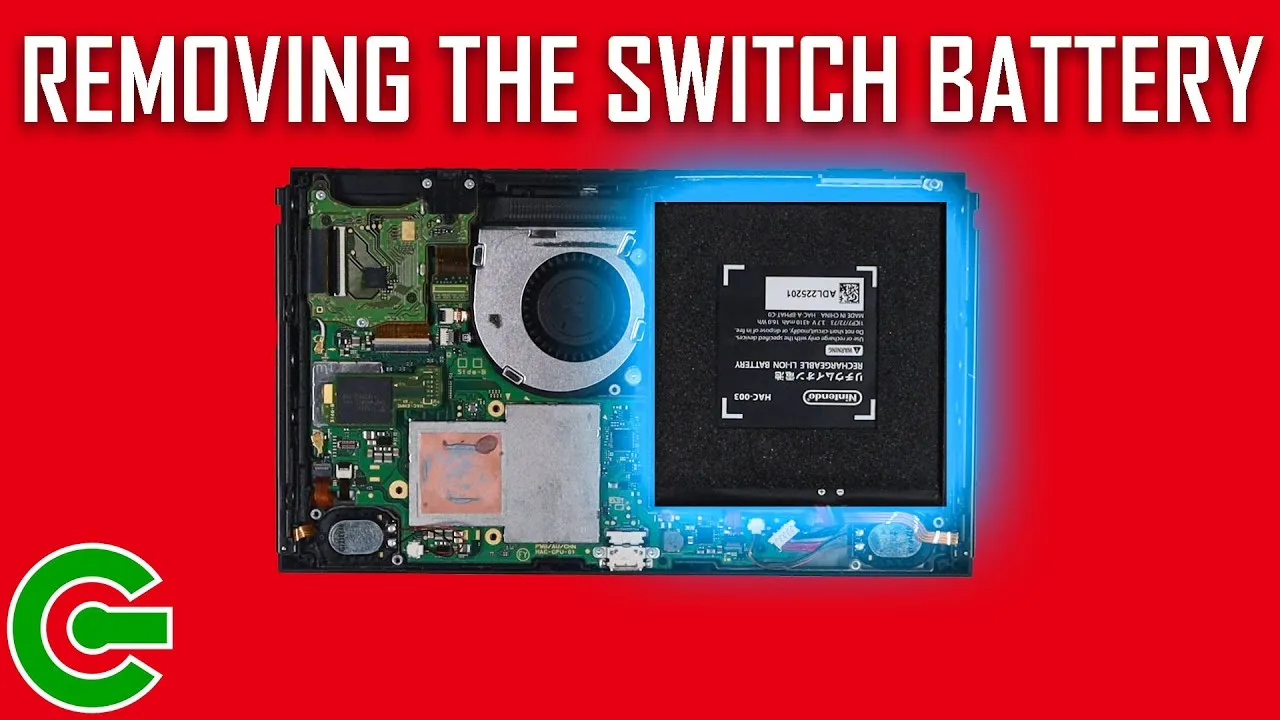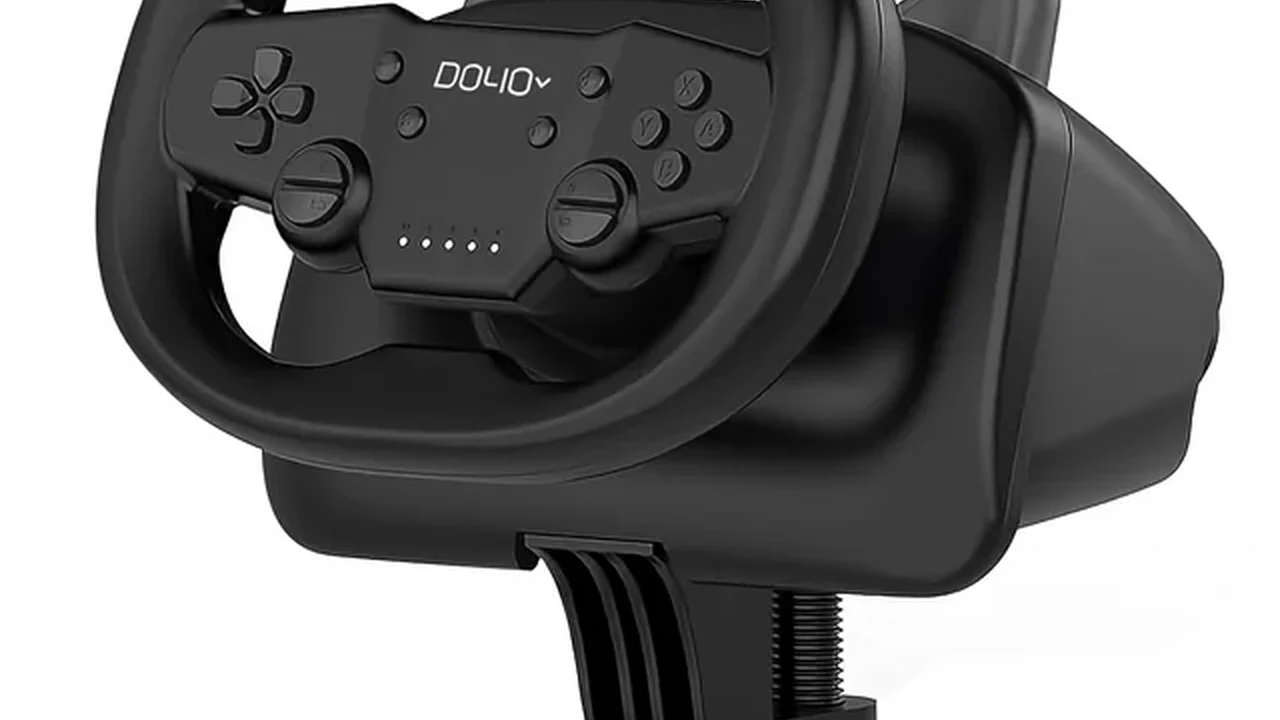Nintendo Switch 2 Environmental Initiatives
Nintendo's efforts towards sustainability with the production of the Switch 2.

Nintendo Switch 2 Environmental Initiatives
As the world becomes increasingly aware of climate change and environmental impact, major corporations like Nintendo are facing growing pressure to adopt more sustainable practices. The upcoming Nintendo Switch 2, a highly anticipated console, presents a significant opportunity for Nintendo to showcase its commitment to environmental responsibility. This article delves into Nintendo's potential environmental initiatives surrounding the production, lifecycle, and disposal of the Switch 2, exploring how they might align with global sustainability goals and what consumers can expect.
Sustainable Sourcing and Manufacturing for Nintendo Switch 2
One of the most critical aspects of a product's environmental footprint lies in its raw materials and manufacturing processes. For the Nintendo Switch 2, this means looking at everything from the rare earth minerals in its components to the energy used in its factories. Nintendo has a history of working with suppliers to ensure ethical sourcing, but the Switch 2 could see an even greater emphasis on sustainability.
Recycled Materials in Nintendo Switch 2 Production
A key area for improvement is the incorporation of recycled materials. Imagine a Nintendo Switch 2 casing made from post-consumer recycled plastics, or internal components utilizing recycled metals. This not only reduces the demand for virgin resources but also lessens the energy required for extraction and processing. While specific details for the Switch 2 are yet to be confirmed, industry trends suggest a move towards greater use of recycled content in electronics. For example, companies like Apple have made significant strides in using recycled aluminum and rare earth elements in their devices. If Nintendo follows suit, we could see a Switch 2 that boasts a higher percentage of recycled content than its predecessor. This would be a significant selling point for environmentally conscious consumers.
Energy Efficiency in Nintendo Switch 2 Manufacturing Plants
The energy consumption of manufacturing plants is another major contributor to a product's carbon footprint. Nintendo could invest in renewable energy sources for its production facilities, such as solar panels or wind turbines. Optimizing manufacturing processes to reduce waste and improve efficiency would also play a crucial role. This could involve implementing lean manufacturing principles, which aim to minimize waste without sacrificing productivity. Furthermore, partnerships with suppliers who also prioritize renewable energy and efficient practices would amplify Nintendo's overall environmental impact. This holistic approach to the supply chain is becoming increasingly important for large-scale electronics production.
Nintendo Switch 2 Energy Consumption and Efficiency
Beyond manufacturing, the operational energy consumption of the Nintendo Switch 2 itself is a vital consideration. A more energy-efficient console benefits both the environment and the consumer, leading to lower electricity bills.
Optimized Power Management for Nintendo Switch 2
The Nintendo Switch 2 is expected to feature more powerful hardware, but this doesn't necessarily mean higher energy consumption. Advances in chip design and power management technologies can lead to significant efficiency gains. Nintendo could implement sophisticated power-saving modes, dynamic frequency scaling for its CPU and GPU, and more efficient standby modes. For instance, the console could automatically enter a very low-power state when not in use, or intelligently adjust its performance based on the demands of the game, thereby conserving energy. This intelligent power management would be a significant upgrade from previous generations, offering a more eco-friendly gaming experience.
Low Power Components in Nintendo Switch 2 Hardware
The choice of internal components also plays a role. Utilizing low-power memory, efficient display technologies (like an improved OLED panel), and a highly optimized system-on-a-chip (SoC) can drastically reduce the console's overall power draw. For example, a more efficient processor architecture, similar to what we've seen in modern smartphones, could deliver higher performance with less power. This would not only extend battery life in handheld mode but also reduce the console's energy footprint when docked and connected to a power source. Consumers would benefit from longer playtimes on the go and a reduced impact on their electricity bills.
Nintendo Switch 2 Packaging and Logistics
The journey of the Nintendo Switch 2 from factory to consumer also has an environmental cost, primarily through packaging and transportation.
Eco Friendly Packaging for Nintendo Switch 2
Nintendo could significantly reduce its environmental footprint by adopting more eco-friendly packaging. This means minimizing plastic use, opting for recycled and recyclable cardboard, and using plant-based inks. Imagine a Nintendo Switch 2 box that is entirely recyclable, with minimal plastic inserts. Companies like Microsoft have already moved towards 100% recyclable packaging for some of their products, setting a precedent for the industry. This would not only reduce waste but also appeal to consumers who prioritize sustainable packaging. Furthermore, reducing the overall size and weight of the packaging can lead to more efficient transportation, further lowering carbon emissions.
Optimized Logistics and Distribution for Nintendo Switch 2
Efficient logistics and distribution networks can reduce fuel consumption and emissions. Nintendo could optimize shipping routes, utilize more fuel-efficient transportation methods, and explore regional manufacturing hubs to minimize long-distance shipping. This could involve using sea freight over air freight where feasible, or optimizing truck routes for fewer trips. Partnerships with logistics companies that also prioritize sustainability and have their own carbon reduction targets would further enhance Nintendo's efforts. This 'green logistics' approach is becoming a standard for responsible global companies.
Nintendo Switch 2 Product Lifespan and End of Life
A longer product lifespan and responsible end-of-life management are crucial for reducing electronic waste.
Durability and Repairability of Nintendo Switch 2
Designing the Nintendo Switch 2 for durability and repairability would significantly extend its lifespan. This means using robust materials, making common components easily replaceable (like Joy-Cons or batteries), and providing clear repair guides and spare parts. For instance, if the Joy-Cons are designed to be more robust and less prone to drift, or if battery replacement is made simpler, consumers would be less likely to discard their console prematurely. The 'right to repair' movement is gaining traction globally, and Nintendo embracing this philosophy would be a major win for environmental sustainability and consumer satisfaction. A more modular design could also facilitate easier repairs and component upgrades.
Nintendo Switch 2 Recycling Programs and E-Waste Management
Even the most durable products eventually reach the end of their life. Nintendo could expand and promote robust recycling programs for the Switch 2, making it easy for consumers to responsibly dispose of their old consoles. This could involve partnerships with e-waste recycling facilities, offering trade-in programs, or providing clear instructions on how to recycle components. For example, a program where consumers can send back their old Switch consoles for proper recycling, perhaps even receiving a discount on a new Switch 2, would be highly effective. This ensures that valuable materials are recovered and hazardous substances are disposed of safely, preventing them from polluting landfills. Proper e-waste management is a critical step in closing the loop on electronics production.
Specific Product Recommendations and Use Cases for Sustainability
While the Nintendo Switch 2 itself will be the primary focus, accessories and how users interact with the console can also contribute to its overall environmental footprint. Here are some specific product recommendations and use cases that align with sustainability goals:
Eco-Friendly Nintendo Switch 2 Accessories
When it comes to accessories, consumers can make conscious choices. Look for third-party accessories that prioritize sustainability. For example:
- Carrying Cases: Instead of synthetic materials, consider cases made from recycled PET plastic or organic cotton. Brands like WaterField Designs (though often premium priced, they focus on durability and quality, reducing the need for frequent replacement) or smaller eco-conscious brands on platforms like Etsy might offer options made from sustainable fabrics. A typical recycled PET case might cost around $30-$50, while organic cotton options could be similar.
- Controller Grips: Seek out grips made from recycled plastics or biodegradable materials. Some smaller manufacturers are experimenting with plant-based plastics. These might be harder to find from major brands but are worth seeking out. Prices typically range from $15-$30.
- Screen Protectors: While glass is generally recyclable, some companies are exploring screen protectors made with a higher percentage of recycled glass or even biodegradable films. Brands like Spigen or amFilm are widely available, but look for specific product lines that highlight eco-friendly attributes. Expect to pay $10-$20 for a good quality screen protector.
- Charging Cables: Opt for cables with braided exteriors made from recycled materials and durable connectors to ensure a longer lifespan. Brands like Anker or Native Union often offer high-quality, durable cables that reduce the need for frequent replacements, though they might not explicitly market as 'eco-friendly' in terms of material composition, their durability contributes to sustainability. A durable USB-C cable might cost $10-$25.
Comparison: Official vs. Third-Party Eco-Friendly Accessories
Official Nintendo accessories are known for their quality and compatibility, but they don't always lead in eco-friendly materials. Third-party brands, especially smaller ones, often have more flexibility to experiment with sustainable materials. However, quality and durability can vary. It's a trade-off between guaranteed compatibility/quality (official) and potentially higher eco-credentials (some third-party). For example, an official Nintendo Switch Pro Controller might not explicitly state recycled content, but its robust build means it lasts longer than many cheaper alternatives, reducing waste in the long run. A third-party controller made with recycled plastic might be less durable, leading to earlier replacement. The best approach is to research both the materials used and the overall durability/longevity of the product.
Sustainable Gaming Habits with Nintendo Switch 2
Beyond the hardware, how users engage with their Nintendo Switch 2 can also contribute to sustainability:
- Digital vs. Physical Games: While physical game cartridges have a manufacturing footprint, digital downloads also consume energy (data centers, network infrastructure). The most sustainable approach is to buy games you truly intend to play and keep them for a long time, regardless of format. If you prefer physical, consider buying used games to extend their lifecycle. If digital, ensure you have enough storage to avoid constant downloading and deleting.
- Powering Down: Fully powering off the Nintendo Switch 2 when not in use, rather than just putting it to sleep, can save a small amount of energy over time. This is especially true for extended periods of inactivity.
- Optimizing Settings: Adjusting screen brightness, disabling unnecessary wireless features (like Wi-Fi if playing offline), and using power-saving modes can extend battery life and reduce overall energy consumption.
- Responsible Disposal: When the time comes to upgrade or dispose of an old console or accessories, always seek out certified e-waste recycling centers. Never throw electronics in regular trash. Many electronics retailers offer take-back programs for old devices.
The Broader Impact of Nintendo's Sustainability Efforts
Nintendo's commitment to environmental initiatives with the Switch 2 extends beyond just the console itself. It sends a powerful message to the entire gaming industry and its vast consumer base.
Setting Industry Standards for Sustainable Gaming
As a global leader in the gaming industry, Nintendo has the power to influence its competitors and suppliers. By adopting ambitious sustainability goals for the Switch 2, Nintendo could set new industry standards for eco-friendly electronics. This could spur other console manufacturers to follow suit, leading to a ripple effect across the entire sector. Imagine a future where all major gaming consoles are designed with circular economy principles in mind, from recycled materials to easy repairability. This collective effort would have a far greater environmental impact than any single company's initiatives.
Consumer Awareness and Engagement with Nintendo Switch 2
Nintendo's environmental efforts can also raise consumer awareness about sustainability in electronics. By transparently communicating its initiatives, Nintendo can educate its audience about the importance of responsible consumption and disposal. This could empower gamers to make more informed choices, not just about the Switch 2, but about all their electronic purchases. Engaging the community through initiatives like in-game events promoting environmental themes or partnerships with environmental organizations could further amplify this message. A more environmentally conscious gaming community is a powerful force for positive change.
Long Term Vision for Nintendo and the Environment
The Nintendo Switch 2 represents a crucial step in Nintendo's long-term environmental strategy. It's not just about one product; it's about integrating sustainability into the company's core values and operations. This includes ongoing research and development into greener technologies, continuous improvement in supply chain management, and a commitment to reducing its overall carbon footprint. A long-term vision for sustainability ensures that environmental considerations are embedded in every decision, from product design to marketing. This proactive approach positions Nintendo as a responsible corporate citizen in an increasingly environmentally conscious world.
The Nintendo Switch 2 has the potential to be more than just a gaming console; it could be a testament to Nintendo's dedication to a more sustainable future. By focusing on recycled materials, energy efficiency, eco-friendly packaging, and responsible end-of-life management, Nintendo can significantly reduce its environmental footprint and inspire both the industry and its global fanbase to embrace greener practices. The success of these initiatives will not only benefit the planet but also enhance Nintendo's reputation as a forward-thinking and responsible company.
:max_bytes(150000):strip_icc()/277019-baked-pork-chops-with-cream-of-mushroom-soup-DDMFS-beauty-4x3-BG-7505-5762b731cf30447d9cbbbbbf387beafa.jpg)






